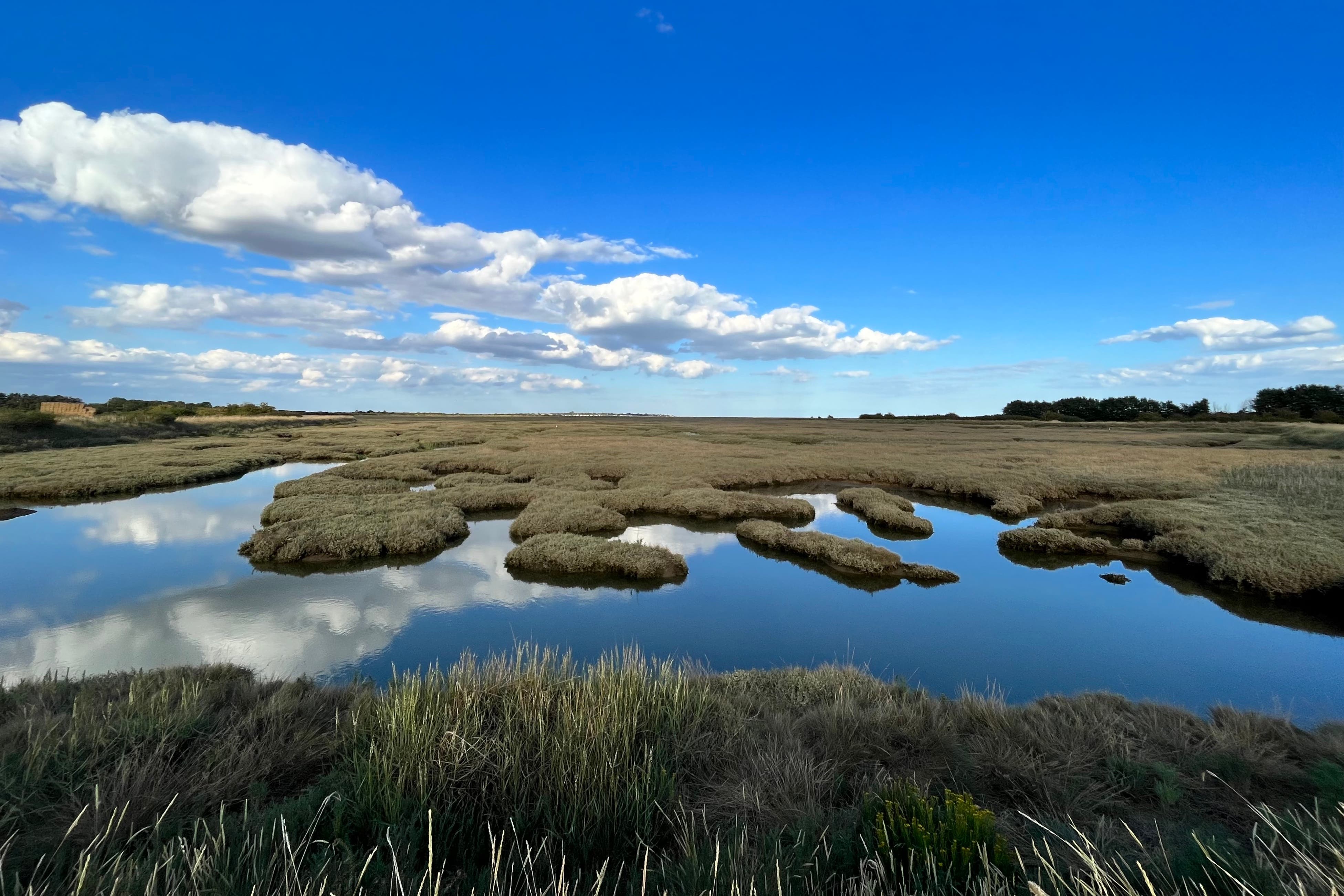Coastal saltmarsh plays role in carbon storage, flood prevention and wildlife
Conservationists are calling for action to protect and restore key marine habitats such as saltmarshes to help tackle climate and nature crises.

Your support helps us to tell the story
As your White House correspondent, I ask the tough questions and seek the answers that matter.
Your support enables me to be in the room, pressing for transparency and accountability. Without your contributions, we wouldn't have the resources to challenge those in power.
Your donation makes it possible for us to keep doing this important work, keeping you informed every step of the way to the November election

Andrew Feinberg
White House Correspondent
Conservationists warn action is needed to protect and restore saltmarshes, as part of efforts to store carbon and tackle the climate and nature crisis.
While a first-of-its-kind report has highlighted that the vast majority of the carbon stored in the UK’s seas is in the seabed sediment, it also showed the role coastal habitats such as saltmarshes have in storing carbon.
At Abbotts Hall nature reserve on the Blackwater Estuary near Colchester, Essex Wildlife Trust is working to conserve natural saltmarshes and create new habitat for wildlife, carbon storage and protection against climate change.
Experts warn that 85% of the UK’s saltmarshes, which provide habitat, carbon capture and natural flood management through slowing the movement of seawater inland, have been lost since the mid 19th century.
And those that remain are threatened by coastal development, pollution from agricultural run-off and sewage, and climate change which brings more extreme storms and rising sea levels.
A “managed realignment” scheme at Abbotts Hall in 2002 saw old sea walls breached in five spots along a 3km (1.9 mile) stretch to create nearly 50 hectares of new saltmarsh and intertidal habitat, as well as the creation of 35 hectares of coastal grassland and other habitats including a freshwater lake.
As well as creating habitat for wildlife – and carbon storage – the project also aimed to protect nearby Salcott from coastal flooding, by providing seawater with an inlet before it reached the village.
At the edge of the new habitat, debris of crab shells lie at the highwater mark, while nearer the estuary, the ground is bright green with samphire, a red-listed lapwing flies overhead and a little egret stalks through the saltmarsh.
Plants such as sea aster, glasswort, sea lavender and golden samphire have recolonised the former fields, while nationally scarce shrubby sea blite grows in a raised area of the low-lying land.
Saltmarshes are key blue carbon habitats
Fish surveys show the water channels and pools in the saltmarsh playing host to species including juvenile European bass, grey mullet and common goby.
Birds including marsh harrier, brent geese, shoveler, teal, redshank and short-eared owls have all been recorded in the restored saltmarsh and intertidal habitats.
The natural saltmarsh which sits next to the restored habitat is playing host to one of a coastal network of flux towers to gather information on the ability of saltmarsh habitats to capture and store carbon, as part of the UK’s “blue carbon” storage in marine and coastal habitats.
The analysis aims to support further restoration around the country and to include saltmarshes in official data on the UK’s greenhouse gases.
Rachel Langley, head of marine and coastal recovery at Essex Wildlife Trust, said: “Saltmarshes are key blue carbon habitats, and they are key estuarine habitats, particularly important along the Essex coast and other areas in the UK.
“They are important as habitat in their own right, in terms of saltmarsh species, and that in turn supports biodiversity of wider species such as wildfowl and waders.
“Saltmarsh provides shelter and a feeding ground for young fish species, and also provides benefits in terms of flood alleviation for communities and terrestrial habitats along the coast.
“And it also sequesters and stores carbon, so all of those team together to make it a really important coastal habitat,” she said.
She said recreating saltmarsh could help maintain the habitat in the face of its loss to rising seas and other pressures, but said it was also really important to protect and restore existing marshes which are hundreds or thousands of years old and are already providing all those natural benefits.
There was a need to continue and improve existing protections along the coast, with adequate management and enforcement to make sure saltmarshes were kept in good condition, she said.
And she said that beyond their carbon storage, wildlife habitat and flood alleviation benefits, saltmarshes had a value to people as “one of our last wilderness habitats in the UK”.
“You’ve got the moody estuaries and that feeling, it can be quiet or you just hear the odd curlew sound in the winter, it is really evocative and you can really feel that connection to nature,” she said.
She pointed to the smells of the estuary, the changing colour of the plants and the birdlife throughout the year, and the mystery of not being able to see into the water, but imagining the “ecosystem bubbling away under the serene marsh”.
“I think it’s really quite special,” she said, adding: “Standing on a marsh is completely different to a feeling you get anywhere else.”
Subscribe to Independent Premium to bookmark this article
Want to bookmark your favourite articles and stories to read or reference later? Start your Independent Premium subscription today.